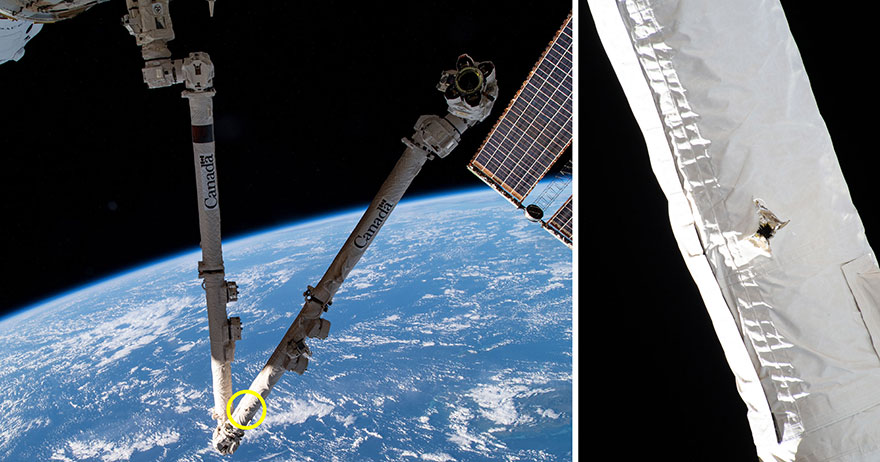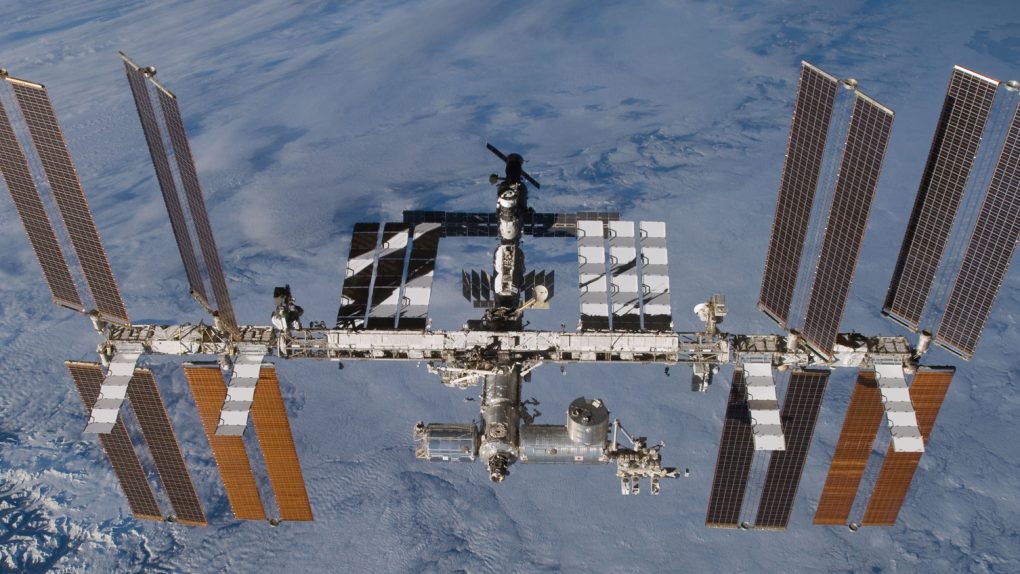As if we needed another timely reminder that space junk is becoming a serious problem, the International Space Station now has a bit of additional damage thanks to a piece of debris traveling at high speeds around Earth. The Canadian Space Agency reported the existence of a hole in the robotic arm known as Canadarm2 which had not previously been observed. The hole was first discovered during what is described as a routine inspection of the arm, and experts studying the images say that the only thing that could have caused the damage is a small chunk of debris slamming into and puncturing the arm and thermal blanket that covers it.
Images of the damage show very clearly that there is a substantial hole right in the middle of the arm. The Canadian Space Agency says that at the moment it appears that the arm is working just fine. That’s obviously great news, but the fact that the hole went undetected for so long can’t be very reassuring to the astronauts living aboard the orbiting laboratory.
Via the CSA:
Experts from the Canadian Space Agency (CSA) and NASA worked together to take detailed images of the area and assess the impact, which occurred on one of Canadarm2’s boom segments.
Despite the impact, results of the ongoing analysis indicate that the arm’s performance remains unaffected. The damage is limited to a small section of the arm boom and thermal blanket.

There are a lot of objects orbiting Earth, and many of them are quite small. You’d never know it by peering into the night sky but there are tens of thousands of objects that NASA and other groups track on a 24/7 basis to ensure that they don’t slam into the International Space Station or other vital hardware that is still functional. It’s a monumental task to monitor the objects, all of which are at least the size of a softball, but it’s really just a portion of the space junk that’s up there.
Objects smaller than a softball are just too hard to track and, in some cases, too plentiful. When a satellite runs into another satellite, or a discarded rocket booster is struck by some other piece of space debris, the number of individual objects multiplies. They continue to get smaller with each collision and at this point, there are so many tiny pieces of space junk zipping around our planet that they could never be tracked with any kind of accuracy.
It’s these small objects that pose the greatest risk to future missions and even astronauts aboard the International Space Station. It doesn’t take a huge piece of space trash to cause a lot of damage, and in the case of the robotic arm that sustained damage on the ISS, the fact that it didn’t hit a sensitive component is just dumb luck.








